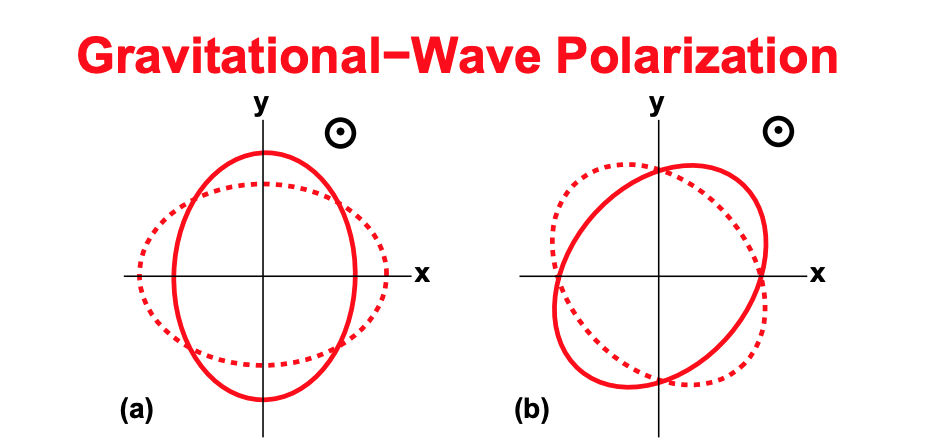How could one calculate and derive the "force" or displacement and stretching of an object due to gravitational waves?
-
$\begingroup$ try searching on "LIGO". $\endgroup$– niels nielsenCommented Aug 1, 2021 at 2:56
-
$\begingroup$ Gravitational Waves Volume 1 by Maggiore contains the calculations you're looking for, as well as many more. $\endgroup$– Vincent ThackerCommented Aug 1, 2021 at 4:32
1 Answer
In the locally inertial frame of the particles, you can write the motion in terms of the Riemann curvature tensor (evaluated at the origin) as \begin{equation} \frac{{\rm d^2} x^i}{{\rm d} t^2} = - R^0_{\ i0j}(0) x^j \end{equation} where $x^i$ is the distance of the particle from the origin in the $i$-\th direction (note that by using locally inertial coordinates, we are assuming $x^i$ is small, compared to the length scale associated with the curvature, which in this case will mean the wavelength of the gravitational wave).
For a monochromatic gravitational plane wave with frequency $f$, (in units with $c=1$, and apologies if I have lost track of a factor of 2) \begin{equation} R^0_{\ i0j}(0) = \omega^2 \left(h_+ e^+_{ij} + h_\times e^\times_{ij}\right) \sin \omega t \end{equation} where the sum over $j$ is assumed, $\omega=2\pi f$ is the angular frequency, $h_+$ is the amplitude of the "plus" gravitational-wave polarization, and $h_\times$ is the amplitude of the "times" gravitational-wave polarization, and $e^+$ and $e^\times$ are symmetric and trace-free "polarization tensors" which capture the motion of the particles. If we let the $z$ axis be the direction of propagation of the gravitational wave, we can choose coordinates in the $x-y$ plane such that \begin{equation} e^+ = \left( \begin{matrix} 1 & 0 & 0 \\ 0 & -1 & 0 \\ 0 & 0 & 0 \end{matrix}\right), \ e^\times = \left( \begin{matrix} 0 & 1 & 0 \\ 1 & 0 & 0 \\ 0 & 0 & 0 \end{matrix}\right) \end{equation} If you imagine a ring of particles, purely "plus" motion will cause particles along the $x$ axis to increase their distance from the origin while particles along the $y$ axis will increase their distance. If you think about it and draw some pictures, you can also convince yourself that the "cross" polarization will cause a cross motion. Here are some pictures from the Living Reviews article "The Confrontation between General Relativity and Experiment " by Cliff Will:
Coming back to the equation, we can write \begin{equation} \frac{{\rm d}^2 x^i}{{\rm d} t^2} = - \omega^2 \left(\sum_{a=+,\times} h_a e^a_{ij}\right) x^j \end{equation} Assuming all the masses are the same for simplicity, this is equivalent to a set of coupled harmonic oscillators \begin{equation} m \frac{{\rm d^2} x_i}{{\rm d} t^2} = F_i = - K_{ij} x^j \end{equation} where $F_i$ is the force, and where the "coupling matrix" $K_{ij}$ is given by \begin{equation} K_{ij} = m \omega^2 \sum_{a=+,\times} h_a e^a_{ij} \end{equation}

